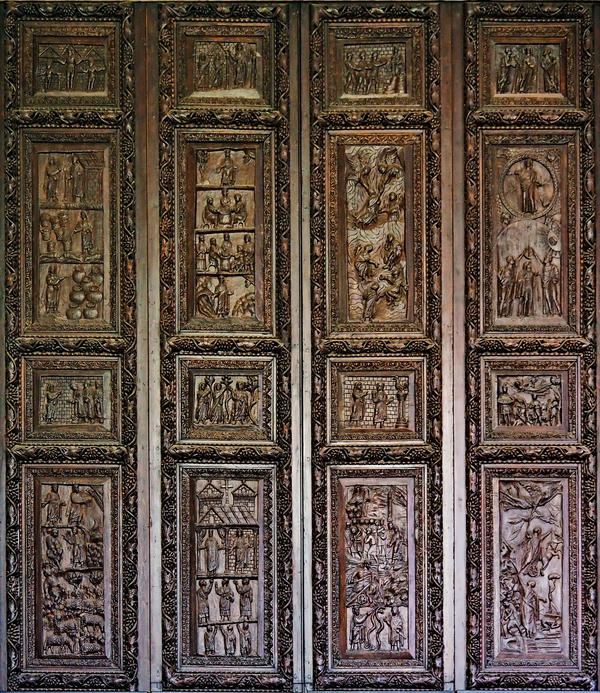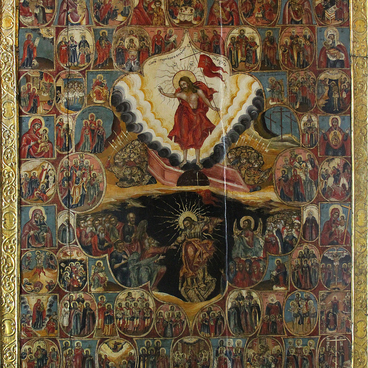The scene of Christ ascending into Heaven is described in the Acts of the Apostles in the New Testament. The events in the book follow chronologically the events in the Gospels, from the birth of Christ to his death and resurrection. The Acts is deemed to have been written by Apostle St. Luke.
The Ascension of Christ
Время создания
Second half of the 19th century
Размер
106,5x62,2 cm
106.5х62.2х2.6 cm
106.5х62.2х2.6 cm
Техника
Wood, oil
0
Открыть в приложении#13
Unknown author
The Ascension of Christ
#2
#4
The bas-relief panel of the door of the Basilica of Santa Sabina in Rome. Source: commons.wikimedia.org
St. Luke narrates that Christ arose and stayed on earth for 40 days, and then, witnessed by his pupils, ascended into Heaven on a cloud.
#10
Icons with the Ascension scenes show Theotokos surrounded by angels and apostles, with Christ above them on a cloud in a ring of golden rays, called a ‘halo’ in icon painting. Angels are painted surrounding Christ on both sides.
The icon of the Ascension of Christ from the collection of the State Museum of Fine Arts of Khanty-Mansiysk was painted in Yaroslavl in the second half of the 19th century. At that time Russian icon-painting was following the manner of West European temple art. The icon was painted in oil instead of tempera which had always been used in Russia before.
#5
The images were painted lifelike: the space is three-dimensional, and the figures have shadows. The background is also thoroughly detailed, showing low shrubs and shadows of the clouds on the ground. The icon’s frame is also done differently. The master painters decorated the corners and the centerpiece with cartouches, an intricate ornament with monograms that emerged in the Baroque age.
#11
What remained traditional were the semi-round flat nimbuses which in West European frescos were shown as three-dimensional luminous rings above the heads. As in many Russian icons, nimbuses together with the frames were covered with golden leaves. This combination of Western and Russian art was common in the 19th century.
Theotokos was depicted in line with the icon tradition, in a blue robe, chiton, and a purple shroud, omophorion. This type of shroud was worn by married women at the beginning of the millennium. Its purple colour was a symbol of the unique and majestic status of the Mother of God, and the blue colour signified her purity.
#12
The icon once belonged to Viktor Samsonov, a patron of the arts from St. Petersburg. In 1996 it was acquired by the Generations Foundation of the Khanty-Mansi Autonomous District, to be transferred into the museum collection 15 years later.
#14
State Museum of Fine Arts of Khanty-Mansiysk
читать дальшескрыть
00:00
00:00
1x
The Ascension of Christ
Время создания
Second half of the 19th century
Размер
106,5x62,2 cm
106.5х62.2х2.6 cm
106.5х62.2х2.6 cm
Техника
Wood, oil
0
Открыть в приложении
Поделиться



